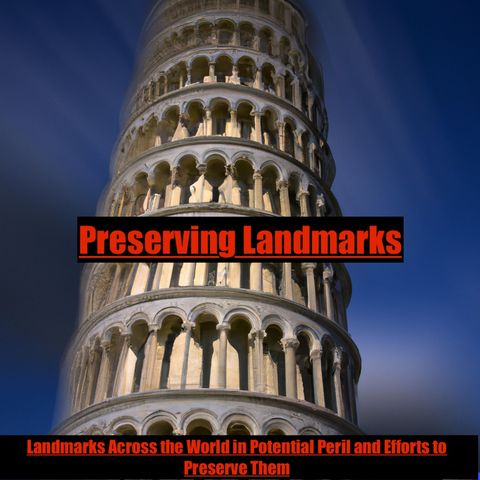4 DIC 2023 · Landmarks Across the World in Potential Peril and Efforts to Preserve Them Throughout history, landmarks have stood as testaments to human ingenuity, creativity, and cultural heritage. These iconic structures, from ancient pyramids to towering cathedrals, are often woven into the fabric of a city's identity, shaping its skyline and inspiring awe among visitors. However, many of these landmarks face threats from natural disasters, human activities, and environmental factors, putting their preservation at risk. Natural Disasters Landmarks located in seismically active regions, such as the Pacific Ring of Fire, are particularly vulnerable to earthquakes and volcanic eruptions. These events can cause significant damage to structures, leading to structural instability and the need for extensive restoration efforts. For instance, the 2011 earthquake in Japan severely damaged the Great Buddha of Kamakura, while the 2010 earthquake in Haiti caused extensive damage to the Citadelle Laferrière, a UNESCO World Heritage site. Human Activities Human activities, including pollution, urbanization, and climate change, also pose significant threats to landmarks. Pollution can corrode building materials and damage artworks, while urbanization can lead to encroachment on landmark sites, altering their historical context and affecting their ability to be preserved. Climate change, with its associated extreme weather events and rising sea levels, can exacerbate the impact of natural disasters and further erode the foundations of landmarks. Efforts to Preserve Landmarks Despite the challenges they face, numerous efforts are underway to preserve landmarks around the world. International organizations, such as UNESCO, play a crucial role in promoting landmark conservation, providing technical assistance, and raising awareness about the importance of protecting these cultural assets. Governments and local communities also implement conservation strategies, ranging from structural reinforcement to pollution control measures. In some cases, innovative technologies are being employed to preserve landmarks. For example, laser scanning and 3D modeling techniques can be used to create digital replicas of landmarks, allowing for virtual restoration and safeguarding the original structure from further damage. Additionally, collaborative conservation projects involving experts from various disciplines, including architects, engineers, historians, and archaeologists, are fostering a more comprehensive approach to landmark preservation. Conclusion The preservation of landmarks is not merely about preserving physical structures; it is about safeguarding the cultural heritage and identity of communities. By addressing the threats that landmarks face and implementing effective conservation strategies, we can ensure that these iconic structures continue to inspire and captivate for generations to come. Thanks for listening to Quiet Please. Remember to like and share wherever you get your podcasts.


